Comtrend PG-9172 Powerline Adapter Review: G.hn Gets Primed for Retail Push
by Ganesh T S on May 3, 2016 8:30 AM EST- Posted in
- Powerline Adapters
- Networking
- Marvell
- G.hn
- HomePlug
- Comtrend
HomePlug and G.hn Go Head to Head
This section presents the benchmark numbers obtained for the four different test cases outlined in the previous section. The Comtrend PG-9172 numbers are graphed in red, while the ZyXEL PLA5405 (representing HomePlug AV2 with MIMO support) numbers are in blue. The main tussle is between these two adapters - they are close in price (USD 77 vs. USD 83) and represent the best possible implementations of the two standards in the evaluated set.
Performance Metrics - TCP Downlink and Uplink
Node A represents the shortest physical distance between the tested nodes. This is a close fight between the HomePlug AV2 and G.hn adapters, with the PG-9172 coming out with a slight lead. Surprisingly, the ZyXEL PLA5206 SISO adapter is better than the PLA5405 in this scenario.
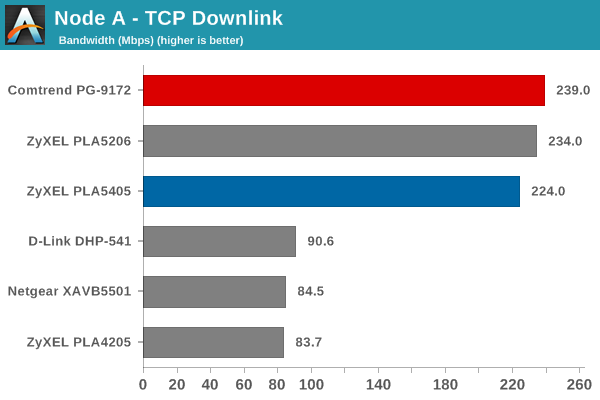
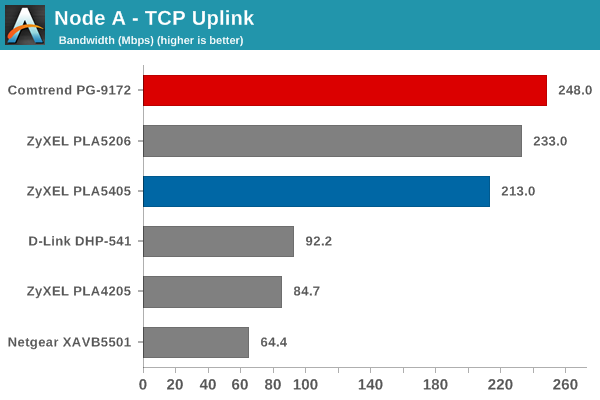
Node B is the garage outlet across the AFCI circuit breaker. The SISO adapter is the surprise winner here, though the G.hn PG-9172 comes a close second. The PLA5405 comes in third, quite a bit behind the G.hn adapter.
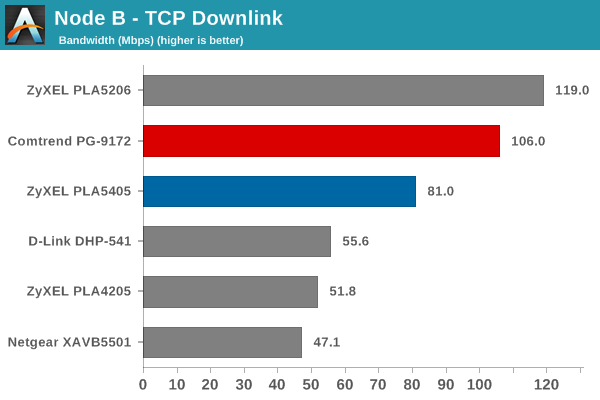

Node C is in the same wall as the garage outlet, and across the circuit breaker again. Here, the Comtrend adapter performs quite well, though it is really hard to choose between the HomePlug AV2 adapters and the G.hn adapter given the small differences in the bandwidth numbers.
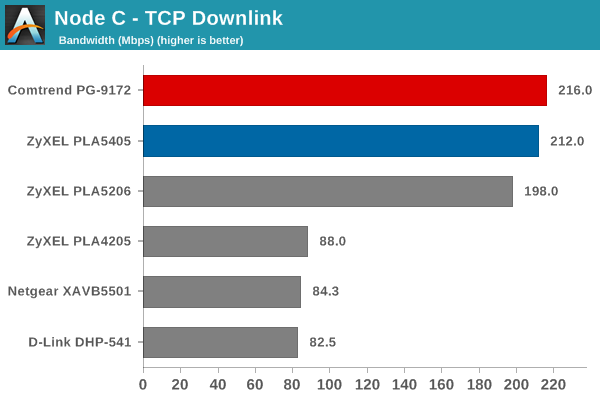
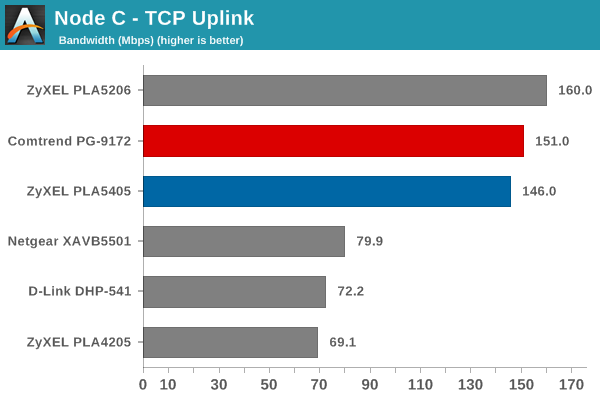
Node D is one of the farther outlets from the master node, and the Comtrend PG-9172 adapter establishes a clear and sizable lead over the HPAV2 adapters.

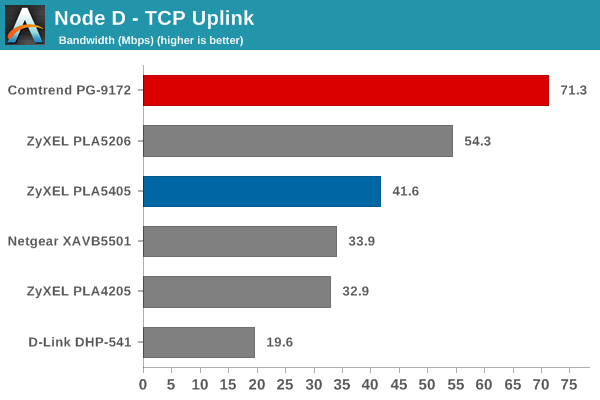
Node E is in the adjacent room, and is one of the closer adapters (similar to Node A). The performance ordering is also similar.
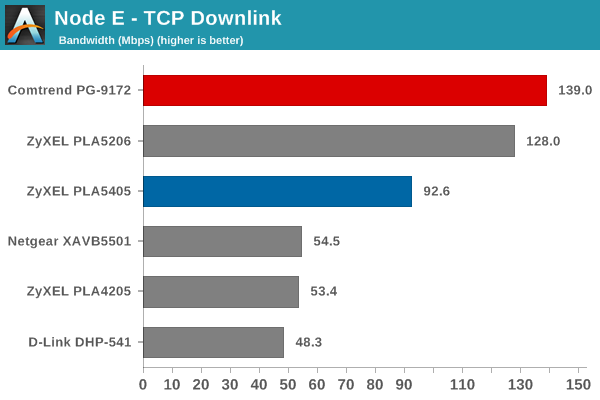
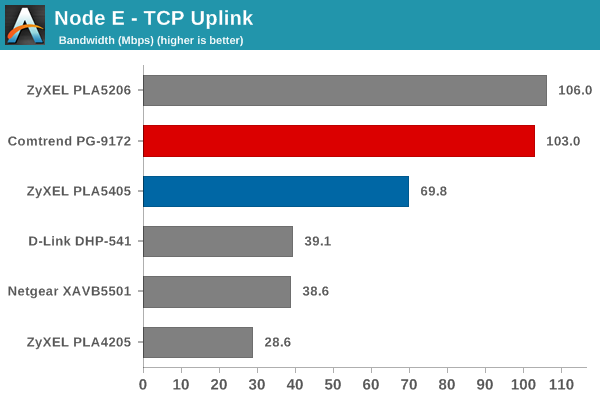
The Comtrend PG-9172 emerges as the clear winner in Node F.

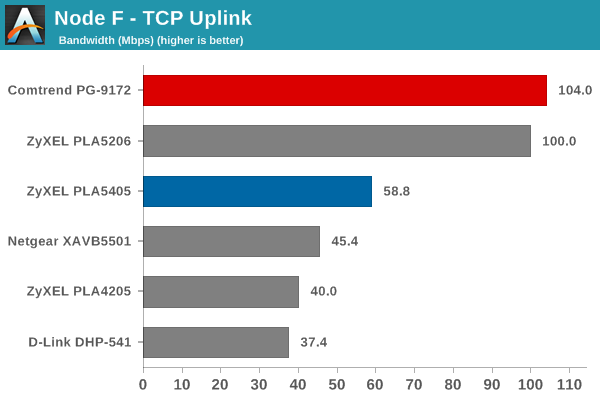
Performance Metrics - UDP Downlink and Uplink
The UDP results across all the nodes are similar in ordering to the TCP results.
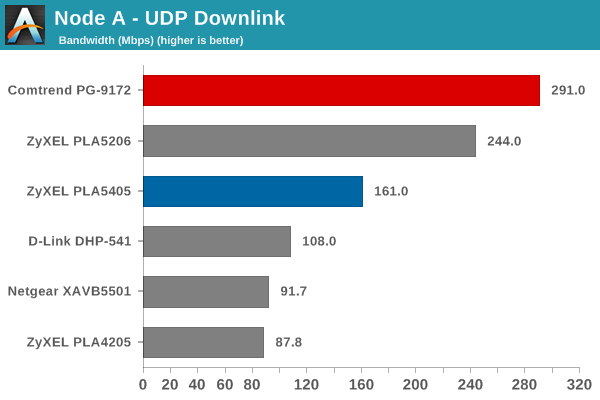
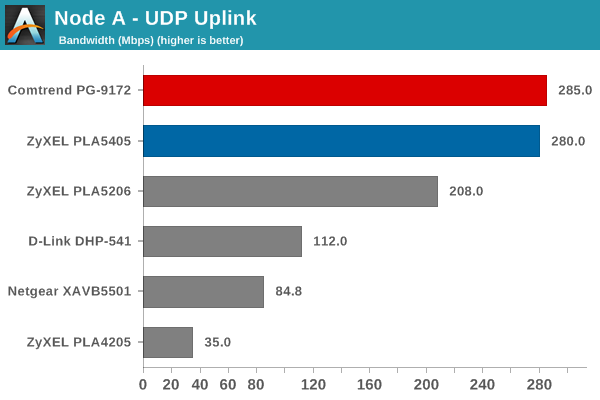
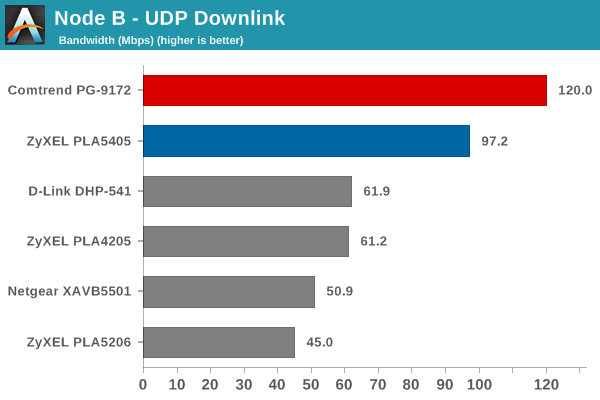
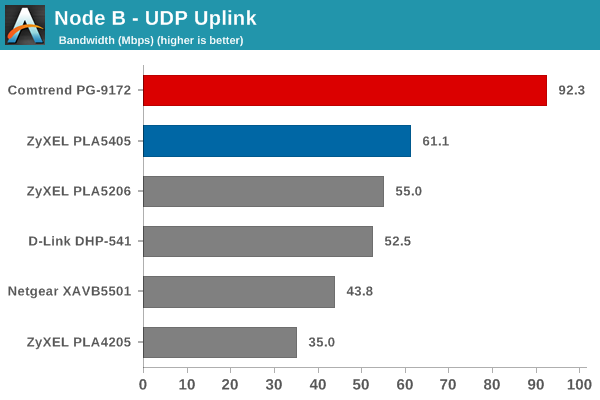

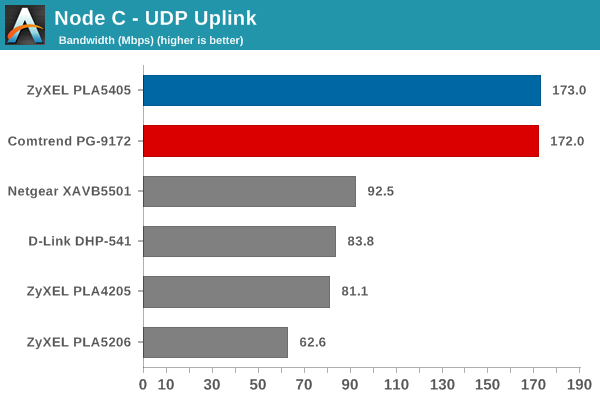
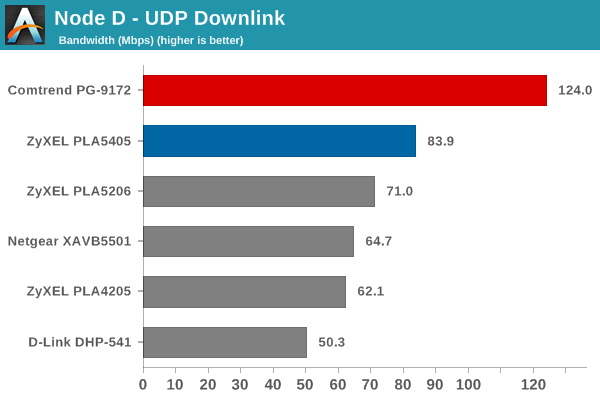
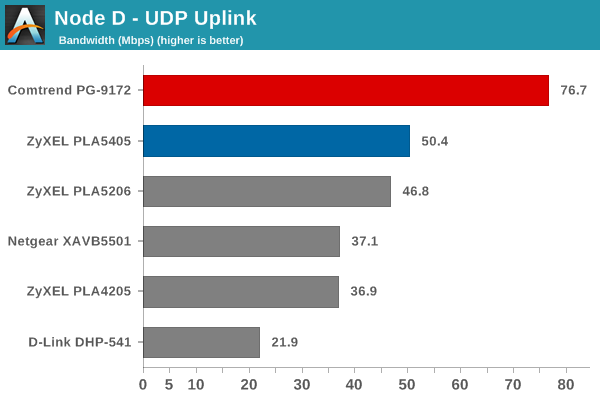
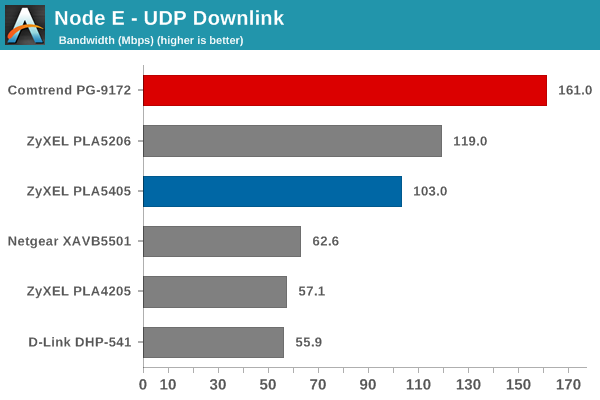
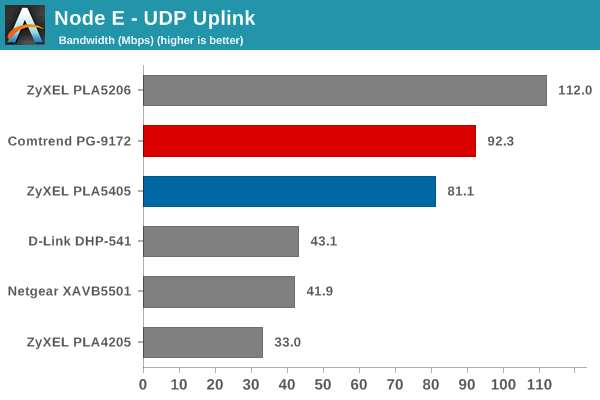
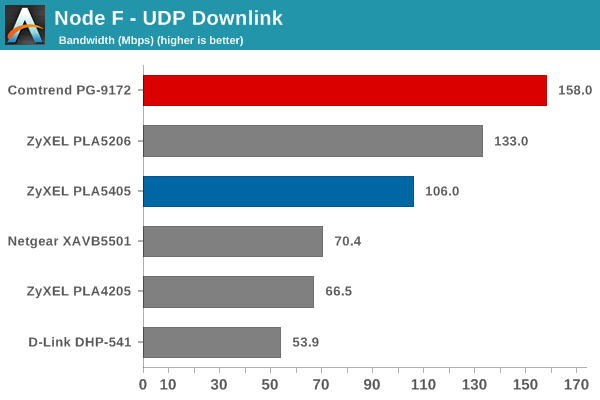
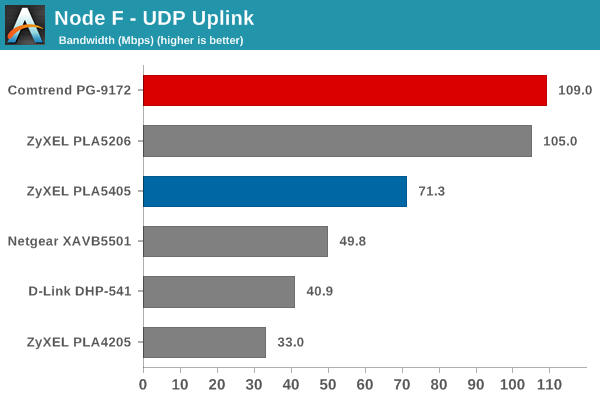
The above results show that the Comtrend PG-9172 G.hn adapter has the best performance in almost all of the tested scenarios.










48 Comments
View All Comments
Murloc - Tuesday, May 3, 2016 - link
powerline has always been a pain for me, it's less hassle to call up the electrician and get a cable pulled. It costs money and it needs space in the wall but at least it works with decent speed.Samus - Tuesday, May 3, 2016 - link
I've never had it work well unless you use it on circuits of the same phase. It seems as soon as you cross phases the reliability and speed fall off significantly.magreen - Wednesday, May 4, 2016 - link
Agreed. I don't think powerline has ever lived up to its billing.I think coax is the way for people who don't want to pull cable. Old cheap DECA units handle 100Mbps flawlessly. Newer bonded MOCA units are pushing actual throughput of 1 gigabit.
kmmatney - Wednesday, May 4, 2016 - link
I wasn't able to get my powerline adapters to work with my desired sockets, so had to use another plug across the room. And then one of the adapters failed after about 2 years. I switched to a cheap programmable wireless adapter. You just connected it to a computer to input your wireless settings, and then it worked on it's own after that. The wireless solution was much cheaper and overall less hassle.barleyguy - Friday, May 6, 2016 - link
I've had pretty good luck with speeds with some TP-Link powerline adapters, but I'm getting rid of them anyway and moving to 802.11AC. The problem is that they create noise on the electrical line, and I can hear it in my speakers when there's not music playing. I don't feel like the utility is worth the hassle either.cswilly - Tuesday, May 3, 2016 - link
Informative review. Looking forward to your testing with BRCM's AV2 part. As it uses 2-87MHz it should outperform Marvell's G.hn on good links.spawnbsd - Tuesday, May 3, 2016 - link
Marvell's 2nd gen 88LX5153 are starting to sample now, and support 2-100MHz in powerline MIMO. In the limited testing we've done in our labs, we're seeing near ~1Gbps throughput in common powerline topologies. Hopefully some hit retail sooner rather than later.morgi - Thursday, May 5, 2016 - link
that is awesome! what lab are you working in?Is it real TCP traffic?
nathanddrews - Tuesday, May 3, 2016 - link
It's a real shame that powerline networking hasn't received more interest and R&D. It's the perfect backbone for IoT, home automation, and retrofitting older homes that don't have ethernet or homes that struggle with radio interference.hojnikb - Tuesday, May 3, 2016 - link
I also wonder why its not adopted as a wide area network ie for internet. Instead of using phone lines use existing power network.